Buy A New Car
Hot Hatch Heaven
Behind the thriving popularity of buying SUVs, there is a lesser but feistier group of people who love buying and driving a Hot Hatch. They are a loyal group of drivers who love the raw speed and excitement that a Hot Hatch drive provides – along with a bit of practicality on the side mind you. The mind-set of a Hot Hatcher is that ‘if my need is to own a hatchback, then let me get a hot one’.
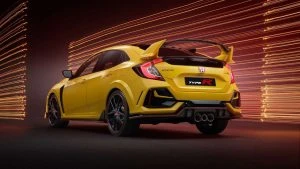
Honda Civic Type R
In Australia one of the most popular Hot Hatch cars of recent times has been the super little Honda Civic Type R. It has even been given a Performance Car of the Year award, while also making a great argument for itself as being one of the best ‘Bang For Your Bucks’ experiences you can buy on four wheels. With 228 kW and 400 Nm the latest Type R Civic is very quick and makes short work of most of its rivals. It constantly feels quicker than anything, except maybe an AMG or Audi RS equivalent, on a backroad or windy race track. Boot space is also 420 litres, which is more than enough for most people’s shopping trip.
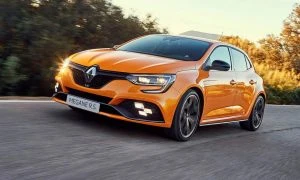
Renault Megane RS
Renault has sold plenty of new RS Megane Hot Hatchbacks, and at times more than the Type R. The Renault Megane RS offers a range that includes the availability of both manual and automatic transmissions, along with two chassis options. Good on road comfort, the power from the 205 kW/390 Nm 1.8-litre turbo four is strong, and with launch control it keeps running quick naught-to-naughty times. Brembo brakes work marvellously to haul in crazy speeds, and the four-wheel steering has immense grip and control. With all this performance you still get great practicality.
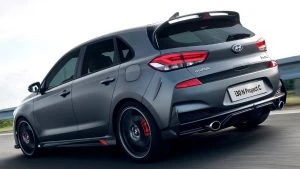
Hyundai i30N
More popular among Australian Hot Hatch buyers has been the potent and very well sorted Hyundai i30N. You’ve got to love the i30N’s fun factor bolstered by the banging and popping exhaust notes!
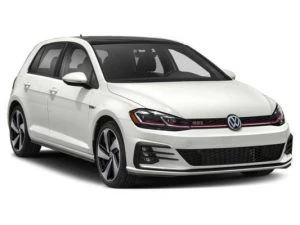
Volkswagen Golf GTi
But, arguably, the most preferred Hot Hatch to buy, at least in Australia, has been the immensely satisfying VW Golf GTi. The thing is just so quick, it’s engaging and easy to drive, and it also has a real luxurious feel to the quality interior. For those that can afford it, the VW GTi still delivers a comprehensive package.
I could add that Peugeot has a GTi Hot Hatch, so too Ford in the form of its Focus ST and Subaru in its WRX, and the….. But you might like to add your few cents to the conversation or even disagree with my overall jurisdiction on the matter.
However, if you are thinking about owning a new performance hot hatch in 2020, then the afore mentioned ones are a few of the best you can buy that are cheaper than a real quick Mercedes Benz A45 AMG, or Audi RS3.
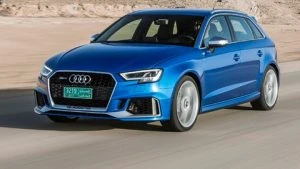
Audi RS3
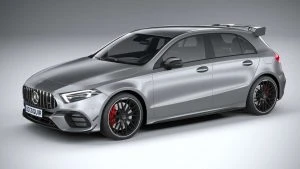
Mercedes Benz A45 AMG
2020 Mitsubishi ASX GSR: Private Fleet Car Review
 This Car Review Is About: Mitsubishi’s ASX with a nameplate that in Mitsubishi’s history has referred to a sporting oriented vehicle. GSR was found on their hi-po Lancers and they were a little less mental than the Evo class cars. However, in ASX trim, the sporting intention has been relegated to a lairy colour on the review car and a front wheel driven chassis with the traction control dialed back a little.
This Car Review Is About: Mitsubishi’s ASX with a nameplate that in Mitsubishi’s history has referred to a sporting oriented vehicle. GSR was found on their hi-po Lancers and they were a little less mental than the Evo class cars. However, in ASX trim, the sporting intention has been relegated to a lairy colour on the review car and a front wheel driven chassis with the traction control dialed back a little.
How Much Does It Cost?: $30,740 is the recommended retail price. $32,490 is the drive-away price as of June 2020.
On The Outside It’s: Been given blacked out highlights to complement the Sunshine Orange paintwork. 18 inch alloys with black paint, along with the grille, door mirrors, and a subtle rear deck lid spoiler are part of the GSR’s visual appeal. It’s a combination that suits the “shield grille” treatment as it brings a more assertive look to the small SUV. The painted alloys have Bridgestone Ecopia rubber, and they’re 225/55 in profile. An identifying GSR badge is on the tailgate, and it’s the only one that says GSR.
 On The Inside It’s: The mostly cleanly laid out look newer Mitsubishis have. “Microsuede/Synthetic Leather Seat Trim with Red Stitching” is the description for the pews and they’re a delight. Comfortable, supportive, warm and there’s no need for electric heating. Air-conditioning is via the simple and classy dial system that Mitsubishi has employed to great effect. They sit above a pair of USB ports and a 12V socket, and below the 8.0 inch DAB equipped touchscreen.
On The Inside It’s: The mostly cleanly laid out look newer Mitsubishis have. “Microsuede/Synthetic Leather Seat Trim with Red Stitching” is the description for the pews and they’re a delight. Comfortable, supportive, warm and there’s no need for electric heating. Air-conditioning is via the simple and classy dial system that Mitsubishi has employed to great effect. They sit above a pair of USB ports and a 12V socket, and below the 8.0 inch DAB equipped touchscreen.
 The tailgate is manually operated, opening to a 393L cargo section that expands to 1,193L with the second row seats folded. A flat loading floor and low lip make loading up a brezze, and the pair of recesses either side help for items that need a little extra security.The angular slope of the ASX’s roof doesn’t compromise interior packaging either. 963mm head room is available for the rear seats, plus 921mm leg room. They’re good numbers considering 1,000mm head room for the front seats and 1,056mm leg room.
The tailgate is manually operated, opening to a 393L cargo section that expands to 1,193L with the second row seats folded. A flat loading floor and low lip make loading up a brezze, and the pair of recesses either side help for items that need a little extra security.The angular slope of the ASX’s roof doesn’t compromise interior packaging either. 963mm head room is available for the rear seats, plus 921mm leg room. They’re good numbers considering 1,000mm head room for the front seats and 1,056mm leg room. Under The Bonnet Is: A 2.4L petrol engine. No diesel, no hybrid. 123kW and 222Nm haul 1,390kg (dry) via a CVT driving the front wheels only. Consumption is quoted as 7.9L/100km for the combined cycle. Mitsubishi’s info system provides a driving average, as in it’ll change on the go, but there is not separate overall figure. We saw a worst of over 9.0L/100km and a shortened range, to a best of 6.7L/100km and a range of over 400km to go from between a half and three quarter full gauge.
Under The Bonnet Is: A 2.4L petrol engine. No diesel, no hybrid. 123kW and 222Nm haul 1,390kg (dry) via a CVT driving the front wheels only. Consumption is quoted as 7.9L/100km for the combined cycle. Mitsubishi’s info system provides a driving average, as in it’ll change on the go, but there is not separate overall figure. We saw a worst of over 9.0L/100km and a shortened range, to a best of 6.7L/100km and a range of over 400km to go from between a half and three quarter full gauge. On The Road It’s: The front wheel driven GSR has a throttle that is open to hard work. As such it also sets up the GSR for a little bit of spirit. The rubber is partly to blame, if you will, as even a moderate amount of throttle application chirps the tyres, easily spinning them and there’s no real intrusion of the engine control nanny either. There’s nothing from the rear end though, and it comes across as being nothing more than to prop up the cargo area.
On The Road It’s: The front wheel driven GSR has a throttle that is open to hard work. As such it also sets up the GSR for a little bit of spirit. The rubber is partly to blame, if you will, as even a moderate amount of throttle application chirps the tyres, easily spinning them and there’s no real intrusion of the engine control nanny either. There’s nothing from the rear end though, and it comes across as being nothing more than to prop up the cargo area.
The steering has some feedback, enough to let the driver know that the front end is lively, and even manages to isolate the fact that the ASX GSR is a front wheel drive vehicle. There’s little to no noticeable torque steer, the front can be hammered quite hard and for the most part the front will stick…in a straight line. Those tyres become a weak point as the GSR will push into understeer reasonably easily and on damp roads the rubber loses grip even more readily.
The CVT is one of the better ones going, and seems to harness the 222Nm more efficiently, even under heavy throttle. There isn’t a Sport shift though, a truly odd choice for a seemingly sports-oriented style car. Yes, there are paddle shifts but…well…no Sport shift. The drive selector itself is a bit painful, having a F shaped slot mechanism and it’s not entirely intuitive in moving the lever. It got caught far too often in Neutral due to the design of the slot, and there is a low range style selection that is picked up by sliding through D to L. This is where a manual change via the paddles seems to be more appropriate. Damping is better than the Outlander PHEV tested the week before; there’s more suspension give, less reliance on the Bridgestone rubber for smaller intrusions, and a little more body lean in cornering aiding grip where it can be. This also means that road holding is improved with less tendency to feel like the tyres may momentarily lose contact on certain surfaces.
Damping is better than the Outlander PHEV tested the week before; there’s more suspension give, less reliance on the Bridgestone rubber for smaller intrusions, and a little more body lean in cornering aiding grip where it can be. This also means that road holding is improved with less tendency to feel like the tyres may momentarily lose contact on certain surfaces.
What About Safety?: Loaded for bear, is what the ASX GSR has in the safety stakes. Forward Collision Mitigation system, with Lane Departure Warning, Lane Change Assist and Blind Spot Warning. Then there is Rear Cross Traffic Alert, to finish off the main package. Auto headlights and wipers, the flashing emergency stop signalling, reverse camera and front & rear parking sensors, plus seven airbags round out the supplementary systems.
What About Warranty And Service?: 100,000 kilometres or five years, with capped price servicing details available.
At The End Of The Drive. The ASX is a competent vehicle regardless of which model you select. Versions such as this, the ASX GSR, manage to find a better level in areas such as handling and the CVT yet just miss the target by not making the gear selection a Sports style. Nor is there a console mounted Sport option.
In Sunshine Orange, along with the blackouts, it’s an eye catcher, and the paint really drinks in the sunlight giving it a true glow. It rolls along nicely, has enough squirt to please, and sells in very good numbers. Add a Sport mode that’s tweaked to suit the characteristics, and it’ll be even better. Check it out here.
October Faction: BMW Set To Launch 4 Series Coupe.
BMW Australia has confirmed the 4 Series Coupe is set for an October 2020 launch date down under. There’s plenty to look at and plenty to like in this striking new machine.
BMW’s TwinPower turbo technology is applied to a pair of four cylinder engines and a six. BMW says the fours will produce 135kW and 300Nm for the 420i, 190kW and 400Nm for the 430i, and for the big six in the M440i 285kW and 500Nm. Autos are the super slick 8 speed Steptronics complete with steering wheel paddle shifts.
For those that prefer the personalisation aspect, BMW’s M Sport Package is ready and waiting. The already bold air intakes are increased in area, and matched at the rear by a large contoured apron. Underneath is the M Sport suspension and 19 inch M Sport M alloys, plus Cerium Grey external accents for the M440i and M Carbon exterior highlights can be optioned. Inside, comfort and safety has the extra touches of knee pads on either side of the centre console plus specific other touches. BMW’s design team may have looked at the past for the future; the front sports a pair of striking yet familiar kidney grilles, with inspiration possibly from the art deco and pulp science magazines of the early part of the 20th century and nod towards their own BMW 3.0 CSi. There’s a heavier nod towards a vertically inclined styling, with a deeper reach towards the lower edge of the front apron. Inside is the newly added horizontal mesh material. There are assertive looking intakes on either side, and sit underneath LED headlights that sweep back deep into the upper edges of the front fenders. Adaptive swivelling adaptive LED with BMW Laserlight are optionable. Laserlight increases high beam range to over 500 metres at speeds of over 60 kilometres per hour.
BMW’s design team may have looked at the past for the future; the front sports a pair of striking yet familiar kidney grilles, with inspiration possibly from the art deco and pulp science magazines of the early part of the 20th century and nod towards their own BMW 3.0 CSi. There’s a heavier nod towards a vertically inclined styling, with a deeper reach towards the lower edge of the front apron. Inside is the newly added horizontal mesh material. There are assertive looking intakes on either side, and sit underneath LED headlights that sweep back deep into the upper edges of the front fenders. Adaptive swivelling adaptive LED with BMW Laserlight are optionable. Laserlight increases high beam range to over 500 metres at speeds of over 60 kilometres per hour.
The designers have looked at how the 4 Series Coupé can stand still and look fast and muscular. Elegant lines in curves and straight work together to pick out the frameless windows in the doors, the short front and rear overhangs, and emphasis the taut LED rear lights. The roofline is a metal wave, smooth, yet powerful. There has been subtle increases in size; there is an extra 128mm to 4,768, width is up by 27mm to 1,852, and a small height increase of just 6mm. It is now 1.383mm and makes the 4 Series 57mm lower than the 3 Series. The wheelbase is up by 41mm for2,581mm. Handling is sharpened by the increase in track with an extra 28mm up front, and 18mm for the rear.
Depending on model, integral head restraints will be fitted, with the rears eats sculpted for a 2+2 configuration. The front seats are a sports style, and the driver graps an M specific leather wheel. It’s a proper cockpit feel with a centre console that houses the Start/Stop button flowing high into the dash itself, and the door panel trim complements that of the instrument panel which is now a broader surface area design. Noise is reduced thanks to an acoustic glass windscreen.
Cabin tech arrives in the form of Android Auto, Apple CarPlay, and a SIM card for 4G LTE connectivity. The BMW Connected Package Professional brings in BMW’s Teleservices which includes the Intelligent Emergency Call, Reat Time Traffic Information, Concierge Services and Remote Services.
A built-in SIM card with 4G LTE connectivity and standard BMW Connected Package Professional enable use of digital services including BMW TeleServices and Intelligent Emergency Call, Real Time Traffic Information with hazard warning, Remote Services and Concierge Services. BMW’s 7.0 OS is standard too, with fully integrated digital access and information. The Live Cockpit Professional delivers a 12.3 inch driver’s screen and a 10.25 control display for the centre. There is also a Head Up Display as standard.
Pricing will be confirmed closer to the October launch date.
Have we Reached Peak SUV Saturation?
Today, just about every manufacturer is releasing one SUV after another, hoping to cash in on Australia’s love affair with the category. Such is our fervent admiration for the humble SUV, it is far and away the nation’s best-selling type of car. The segment makes up as much as half of all new car sales.
But with a never-ending list of new SUV models being pushed into the market, which somewhat contrast the direction being pushed by many that we are meant to be moving towards more eco-friendly and environmentally sustainable vehicles, have we reached peak SUV saturation? Are there simply too many SUV models being launched in the market today?

What are car manufacturers doing?
Take one look at Toyota’s line-up, where the famous pint-sized Yaris is now being converted into a compact SUV crossover. It probably wouldn’t be all that puzzling if it weren’t for the company’s six other SUV models, including the LandCruiser, Prado, Fortuner, C-HR, Kluger and RAV4. Volkswagen, an otherwise ‘slow’ adoptee of the SUV format, will soon have seven or even potentially eight vehicles competing across this segment.
Neither are alone in what appears a very deliberate attempt to all but prioritise high-riding SUVs over all other segments. Just about every auto-maker is adopting a similar strategy, each with numerous SUV models. In fact, some other brands are even going as far as cutting passenger vehicles from their line-up and replacing them with SUVs.

The unstoppable trend
But behind all the engineering nous, design flair and marketing excellence, SUVs are proving an unstoppable trend among Australians. Even as the new car market slumps to historic lows, the SUV category is holding up better than its peers. That comes despite the fact that an SUV would typically be more expensive than a comparable passenger vehicle, even if it is a compact SUV or crossover.
If Australians are prepared to open their wallets and fork out more for an SUV in what was already a challenging economic environment, let alone in the middle of a recession, it is as sure a sign as any that manufacturers will continue to divert extra weight to developments in this segment. That may well mean that we are going to see even more SUV models yet, catering for each size category and various price points.
If you’re not a fan of SUVs you may well have to get used to it, because the trend is here to stay and manufacturers are intent on capitalising from it.